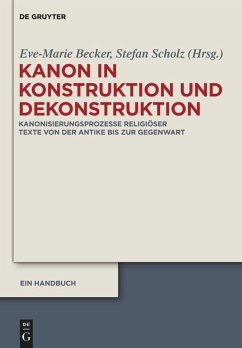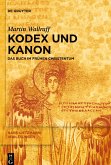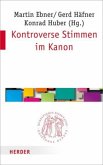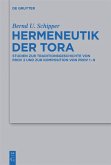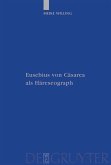This handbook provides a comprehensive introduction into the interrelated circumstances in history and in the history of literature and religion which led to the canonization of eminent literary and religious texts in Antiquity. At the same time, it discusses the key factors and reasons for these canonization processes and the resulting historical consequences. Due to the selection of different collections of texts from Greek, Latin, Jewish and Early Christian text culture, the book offers a comparative and multi-perspective insight into the construction, authorization and interpretation of texts and authors that became part of the canonized corpus of texts. Important hermeneutic questions about the history of the reception and interpretation of these collections of texts are discussed on the basis of modern text research and research on culture, literature and the mediaâ?? up to the current discourse on canon hermeneutics.
Das Handbuch bietet eine umfassende Einführung in die historischen, literatur- und religionsgeschichtlichen Zusammenhänge, in denen eminente religiöse und literarische Texte in der Antike kanonisiert wurden. Es diskutiert zugleich die entscheidenden Faktoren, Gründe und wirkungsgeschichtlichen Folgen dieser Kanonisierungsprozesse: Es werden u.a. Homer und Vergil, die Septuaginta und Qumran, einzelne frühchristliche Texte und das Neue Testament in Hinblick auf ihre Kanonizität miteinander in Beziehung gesetzt. Indem die genannten Textsammlungen aus den Bereichen der griechischen, lateinischen, jüdischen und frühchristlichen Textkultur gewählt werden, wird ein vergleichender und multiperspektivischer Einblick in die Konstruktion, Autorisierung und Interpretation von Texten und Autoren, die Teil kanonisch gewordener Textcorpora geworden sind, möglich. So bietet das Handbuch eine differenzierte Zusammenschau zur Erfassung und Beschreibung der vielfältigen Aspekte antiker religiöser und literarischer Kanonisierungsprozesse. Es nimmt dabei besonders die soziale Konstruktion und Funktion von kanonischen Textsammlungen in den Blick und fragt nach möglichen kanonspezifischen Formen von literarischer und religiöser Kommunikation.
Zugleich werden auf der Grundlage der modernen Text-, Kultur-, Literatur- und Medienforschung wichtige hermeneutische Fragen zur Rezeptionsgeschichte, Deutung und möglichen Fortschreibung dieser Textsammlungen bis in die gegenwärtige Kanondebatte hinein diskutiert.
Das Handbuch bietet eine umfassende Einführung in die historischen, literatur- und religionsgeschichtlichen Zusammenhänge, in denen eminente religiöse und literarische Texte in der Antike kanonisiert wurden. Es diskutiert zugleich die entscheidenden Faktoren, Gründe und wirkungsgeschichtlichen Folgen dieser Kanonisierungsprozesse: Es werden u.a. Homer und Vergil, die Septuaginta und Qumran, einzelne frühchristliche Texte und das Neue Testament in Hinblick auf ihre Kanonizität miteinander in Beziehung gesetzt. Indem die genannten Textsammlungen aus den Bereichen der griechischen, lateinischen, jüdischen und frühchristlichen Textkultur gewählt werden, wird ein vergleichender und multiperspektivischer Einblick in die Konstruktion, Autorisierung und Interpretation von Texten und Autoren, die Teil kanonisch gewordener Textcorpora geworden sind, möglich. So bietet das Handbuch eine differenzierte Zusammenschau zur Erfassung und Beschreibung der vielfältigen Aspekte antiker religiöser und literarischer Kanonisierungsprozesse. Es nimmt dabei besonders die soziale Konstruktion und Funktion von kanonischen Textsammlungen in den Blick und fragt nach möglichen kanonspezifischen Formen von literarischer und religiöser Kommunikation.
Zugleich werden auf der Grundlage der modernen Text-, Kultur-, Literatur- und Medienforschung wichtige hermeneutische Fragen zur Rezeptionsgeschichte, Deutung und möglichen Fortschreibung dieser Textsammlungen bis in die gegenwärtige Kanondebatte hinein diskutiert.

